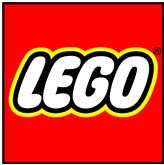this that this that
Brand Archetypes
The Creator
With a brand promise of authenticity, they are focused on innovation. They are highly imaginative and refute nonconformity.
About The Creator Brand Archetype
The Creator is the archetype that makes. This is the brand that writes the instructions. It brings new things into being.
Fueled by Imagination, Defined by Expression
Creator brands are driven by the conviction that imagination is humanity's superpower, that expression is essential, and that everyone has something inside them worth creating. They see the world as full of unrealized potential, and themselves as the tools, platforms, or partners that help make imagination tangible. And they're enabling creation, because expression matters. Because originality matters. Because making demands it. The blank page needs filling.
Some examples of the Creator Brand
- LEGO
- Crayola
- Apple (Steve Jobs era)
- Adobe
- Sharpie
- KITH
The Psychology of The Creator Brand Archetype
Map this to the Enneagram and you get Type 4: The Individualist, combined with Type 5's intellectual curiosity and Type 7's experimental energy. The deep belief that humans are makers, that self-expression is vital, and that the act of creating is both personally fulfilling and culturally essential.
Creators are fueled by the need to bring ideas into reality, to express what's inside, and to make something that didn't exist before. They believe that everyone is creative (not just "artists"), that the tools of creation should be accessible, and that the world needs more original work, not more consumption. They ask: "What could exist that doesn't yet?" So they make. They experiment. They never stop creating.
This is why LEGO sells "infinite possibility." Every set can be built as shown, torn apart, and rebuilt as something completely new. "Play Well" (the meaning of LEGO) is about imagination made tangible. Kids don't need instructions; they need bricks and permission. Similarly, Adobe created the tools that professional creators depend on to bring visions to life. Photoshop, Illustrator, InDesign are the infrastructure of modern creativity.
The Creator Brand's Promise
Every Creator brand makes the same core promise: "You can make something," which is selling creative empowerment. That is, the tools, confidence, and platform you need to express yourself and bring your ideas into reality.
Take Crayola. They didn't become synonymous with childhood by making the best wax sticks. They became iconic by positioning themselves as the first tool of creative expression, the moment when kids realize they can make marks, choose colors, and create images from their imagination. "Color Your World" is about discovering you have creative power. Every blank page is possibility. Every color is a choice. You're a creator.
Or consider Apple (particularly under Steve Jobs). They made tools explicitly for "the crazy ones, the misfits, the rebels, the troublemakers, the round pegs in the square holes." Their entire brand positioned their products as instruments of creation. The Mac was the tool for designers, musicians, filmmakers, people making things that mattered. "Think Different" was an invitation to create differently.
The Creator Brand's Core Values
Imagination as Essential: Creators believe imagination is fundamental to human flourishing. LEGO's entire business model assumes that kids need unstructured creative play. They make licensed sets (Star Wars, Harry Potter) but always maintain that the bricks can become anything. Creativity is a developmental necessity. Sharpie positions their markers as tools that make ideas permanent, imagination becomes reality when you can mark it down.
Expression Without Limits: Creators remove barriers to self-expression. Crayola makes 120+ crayon colors because everyone's imagination is different. Adobe Creative Cloud gives professionals the same tools Hollywood and Madison Avenue use. Apple's iPhone has spawned entire creative careers—photographers, filmmakers, musicians creating professional work on phones. Limits on expression are limits on humanity.
The Making Matters: Creators celebrate the act of creation, not just the finished product. LEGO values the building process as much as the completed model. KITH (fashion brand) celebrates the craft of garment creation, the collaboration with artists, the process of bringing designs from sketch to street. It's about making, not just having made. Sharpie celebrates the mark-making itself, crossing things off lists, signing your name, and leaving your mark.
Tools of Empowerment: Creators democratize access to creation. Crayola costs pocket change so every kid can create. LEGO is accessible enough (enough) that millions of families own sets. Adobe now offers subscriptions instead of thousands of dollars in software purchases. Apple makes creation tools available to consumers, not just professionals. If only elites can create, you're a gatekeeper, not a Creator brand.
Originality Over Imitation: Creators value the new, the different, the never-before-seen. Apple celebrates thinking differently. KITH collaborates with artists to create limited, unique pieces. Adobe enables professionals to make work that's never been made before. LEGO's motto is literally about playing well—making your own way. Copying is easy; creating is hard and valuable.
The Creator Brand's Sub-Archetypes
While all Creators share core values, they express them differently. Understanding these nuances helps brands fine-tune their positioning and messaging.
The Artist: Expression-focused and aesthetic-driven, the Artist creates for beauty and emotional impact. Crayola embodies the Artist with its pure creative expression, colors and marks for the joy of making. KITH also operates here, treating fashion as artistic expression. The Artist's potential pitfall can be creating for creation's sake without purpose, or art becoming so self-indulgent it loses audience.
The Innovator: Problem-solving and groundbreaking, the Innovator creates to push boundaries and build what hasn't existed. Apple operates as the Innovator, creating products that fundamentally change how things work. Adobe also lives here, continuously innovating tools that expand what's creatively possible. The risk? Innovation that's novel but not useful, or change for change's sake.
The Builder: Construction-focused and systematic, the Builder creates through assembly and engineering. LEGO is the quintessential Builder, taking discrete elements and assembling them into something new. The satisfaction is in the construction process itself. The trap can be becoming so focused on the system that free expression gets constrained, or building becoming mechanical rather than creative.
The Storyteller: Narrative-driven and meaning-focused, the Storyteller creates to communicate ideas and emotions. Adobe enables Storytellers: filmmakers, designers, writers using tools to tell stories. Sharpie's "Mark the Moment" positioning taps into storytelling, using marks to create and preserve narratives. The danger lies in storytelling becoming formulaic, or narrative overwhelming visual/creative expression.
The Maverick: Unconventional and rule-breaking, the Maverick creates by rejecting conventions and forging new paths. Apple's "Think Different" positioning celebrated the Maverick—creating work that challenges norms. KITH operates with Maverick energy in fashion, disrupting streetwear conventions. The pitfall? Being different just to be different, or maverick status becoming a pose rather than genuine innovation.
Building an Authentic Creator Brand
Lower the Barriers: Make creation accessible to everyone, not just experts. Crayola costs dollars so every child can create. LEGO sets range from $5 to $500 so builders at every level can participate. Apple's iMovie and GarageBand are free. Adobe offers student pricing. If only wealthy or trained people can use your tools, you're maintaining gatekeeping.
Celebrate the Process: Honor making, not just finished products. LEGO instructions show the building process step-by-step. Adobe tutorials teach techniques, not just outcomes. Sharpie celebrates the marks themselves—lists, sketches, tags. The creative process deserves celebration because that's where the magic happens. Glossy finished products can make people think "I could never do that." Process shows them they can.
Provide Great Tools: Don't cheap out on the creative instruments. Adobe's software is industry-standard because it's genuinely the best tool for professionals. LEGO bricks clutch perfectly across 60+ years of production. Apple's screens, processors, and interfaces serve creators' needs. Crayola's colors are consistent and vibrant. Creator brands have to have the best tools, because they must serve the vision.
Inspire Without Intimidating: Show what's possible while making it feel achievable. LEGO sets show incredible builds but include instructions anyone can follow. Crayola packaging shows colorful art but it's kid-art, not intimidating perfection. Apple showcases amazing creator work ("Shot on iPhone") while making it clear the tool is accessible. Inspiration that creates discouragement isn't helpful.
Build Community: Creators need other creators. LEGO has massive fan communities (AFOLs - Adult Fans of LEGO) who share builds and techniques. Adobe has forums, tutorials, and showcases where creators learn from each other. KITH creates community around drops and collaborations. Isolated creators burn out; communities sustain creative practice.
Let Go of Control: Real creation requires freedom. LEGO accepts that people will ignore instructions and build whatever they imagine. Apple gives creators tools then gets out of the way. Adobe enables work their engineers never imagined. Sharpie lets people mark whatever matters to them. Creator brands that try to control expression are controllers, not true Creators.
The Creator archetype endures because it speaks to something fundamental: the human need to make, to express, and to bring something new into existence. In a culture increasingly focused on consumption, passive entertainment, and AI-generated content, Creator brands celebrate the irreplaceable value of human imagination and the act of making.
They remind us that everyone is creative. That expression is essential to being fully human. That the tools of creation should be accessible, not restricted. And that the world needs more people making things, not just consuming what others made.
The Creator Connection Strategy
These brands inspire imagination, a sense of wonder, and originality and therefore connect by offering up new, imaginative ways of solving problems. Lego solves the problem of play, Crayola for drawing, and Apple for innovation.
The Creator Brand Voice
Friendly
Humble
Authentic
The Creator Brand Colors

Creator Brand Examples


![]()


